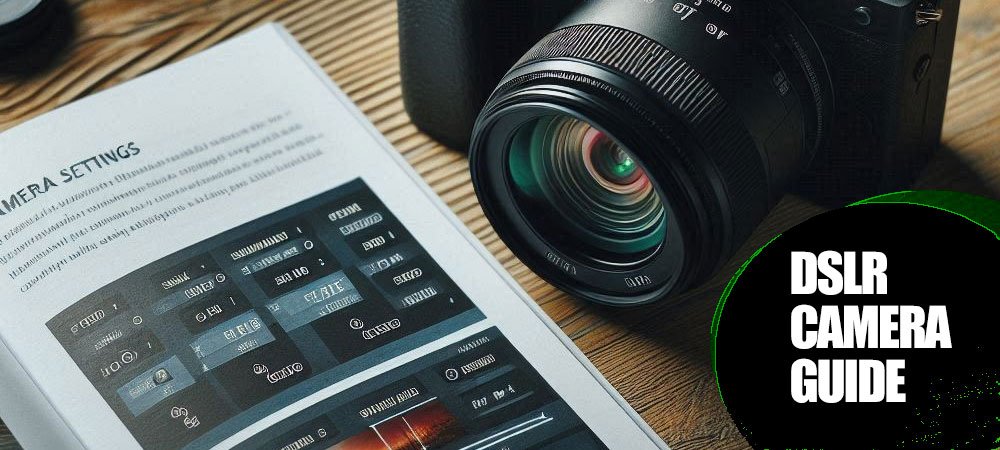For those who haven’t touched DSLRs yet, this DSLR Camera Guide will change your life and thinking about these types of cameras. You’ll find hidden gems in this article for sure.

We have all heard of DSLR cameras, and most of us have also seen them. If we are fond of photography at some point in our lives, every one of us craves a DSLR camera. So, the first thing that comes to our mind is what are things to consider when buying a DSLR? Therefore, Here is the DSLR Camera Buying Guide.
Before we get into the things to look at while buying a DSLR, let us first ask you. What do you intend to do with a DSLR?
This question may sound insane to you, but it’s one of the significant factors to consider when you are all set to buy a DSLR. If you are still thinking, why?
Here is your answer.
Every DSLR camera involves a good amount of investment, and whenever we are splurging on something, we need to make sure how important is it. Most importantly, DSLR cameras are primarily categorized into three types. Entry-level, Intermediate and professional.
Entry-level
Who’s it for?
Entry-level DSLR cameras are for people who have never handled a camera before
Intermediate
Who’s it for?
Intermediate cameras are for people who have minimal experience in handling cameras
Professional
Who’s it for?
professional DSLR camera is for people who are veteran photographers
Entry-level DSLR: What are Entry-level DSLRs?
If you have recently stepped into the world of photography, then it is best to opt for cameras, commonly known as entry-level DSLRs.
An entry-level DSLR is the most affordable sort of DSLR, and it’s usually used as a photographer’s first foray into interchangeable-lens cameras and a backup camera for a working professional or a trip camera for an enthusiast.
The term “entry-level” refers to characteristics and features that make the camera particularly user-friendly and functional, as a good starting point, and as a stepping stone to a more advanced grasp of camera and exposure controls.
The photographic quality of these cameras is unaffected; instead, the range of options for controlling the DSLR tends to tilt more toward automated alternatives and several pre-set effects for attaining a specific appearance without the extensive knowledge required when using a manual camera.
Intermediate DSLR: What are Intermediate DSLRs?
Following that is the broad “intermediate” category, covering the most significant number of DSLRs, ranging from entry-level to professional. Intermediate DSLRs frequently combine a structure of automatic shooting options and creative modes and an enlarged set of manual controls, allowing the user to shoot in their preferred method or distort the camera’s settings based on specific shooting scenarios.
When graduating to the intermediate line of DSLRs, features such as faster autofocus, a more precise exposure metering system, a larger buffer, and a faster continuous shooting rate become more prominent.
Professional DSLR: What are Professional DSLRs?
Professional-grade DSLRs are often a company’s flagship camera, and they’re known for being the best in terms of physical build, manual control, image quality, sensitivity, and speed. Professional DSLRs are distinguished by their full-frame image sensors and top-of-the-line image processors, which allow them to capture the most detail and clarity when shooting still images and video.
The speed and low-light categories and high-resolution categories are the primary categories of professional DSLRs. Working photojournalists, sports, reportage photographers, and art, commercial, and portraits photographers fall under these two categories. At this level, matching a camera to one’s specific shooting requirements is more important than having a comprehensive solution that can’t perform at its best in one’s chosen field. For some, the advantages of a full-resolution 18MP continuous shooting rate of 12 frames per second far outweigh the capacity to print 16 x 24″ prints at 300dpi right from the camera.
Key Features to take into consideration while buying a DSLR
1. Image processor along with sensor

The image sensor and processor are the essential core components of a DSLR and are in charge of its imaging capabilities. The two most prevalent sensor sizes are APS-C and full-frame, each with its own set of advantages in terms of imaging quality and field of view when used with paired lenses.
When paired with an imaging processor, the two technologies enable video recording, continuous shooting, a wide range of ISO sensitivities, and excellent image quality in low-light situations.
2. Autofocus

Another significant component of DSLRs is the autofocus system, which most users should pay close attention to. Autofocus systems are continually changing, with newer methods utilizing two different focusing mechanisms to deliver crisp, precise, and rapid focus.
DSLRs traditionally use a phase-detection approach to acquire focus, operating several fixed AF points to achieve focus based on identified objects throughout the scene. Because the points will cover a broader and more dense area of the location, the greater the number of AF points, the more precision the AF system can function quickly. There are numerous sorts of focus points, such as cross-type points and points that are sensitive at different apertures, in addition to the actual number of focus points.
The second focusing method now being included in certain DSLRs is contrast-detection focusing, which was formerly limited to cameras without a mirror, such as point-and-shoots and mirrorless cameras. Because it directs all of the light via the optical viewfinder, this method of focusing is sensor-based and hence cannot work with the reflex mirror down.
3. Stabilization of images

Image stabilization, which helps to lessen the impression of camera shake produced by extended shutter speeds or more considerable lens lengths, is one of the most beneficial features for many photographers.
There are two primary forms of image stabilization available: lens-shift type image stabilization and sensor-shift type picture stabilization.
In-camera image stabilization means that any installed lens effectively becomes stabilized, allowing for more effective handheld photography. On the other hand, embedding image stabilization within chosen lens designs may be tuned especially for a particular lens to maximize stabilization performance. It is subsequently more effective than body-based stabilization.
4. Viewfinders and Monitors

All contemporary DSLRs include a rear monitor for live view monitoring, image playback, and menu navigation and a viewfinder for composing images at eye level. DSLRs have an optical viewfinder that is either a pentaprism or a pentamirror.
Pentaprisms are the more typical components of a single-lens reflex camera’s viewfinder, and they are made of glass to offer a brilliant image when looking.
Compared to the pentamirror, which uses a system of mirrors to produce a viewable image that is somewhat darker than that of a pentaprism, this comes at slightly more weight and size. Pentaprisms are more common in high-end cameras, whereas pentamirror is more common in entry-level DSLRs to keep the camera’s small weight and compact attractiveness.
Finally, many screens now have a touchscreen design, enabling menu navigation and direct camera and focusing control from the screen. A touch-enabled system is handy for focusing and metering. It allows you to target particular regions for crucial focus and spot exposure metering for better control than a standard metering or focusing system. Touchscreens are also more straightforward to use than separate wheels, dials, or directional pads when accessing menus and viewing images or movies.
5. Video Recording

Due to several advantages that DSLRs offer over video cameras, such as the physical size of the image sensor and the ability to use a considerably more incredible array of lenses, DSLRs and their use in the professional and enthusiast video realms has developed remarkably quickly.
DSLRs’ video quality and capabilities have improved dramatically since the introduction of video and its rising popularity.
From entry-level to professional, most DSLRs can record full HD 1920 x 1080 video for vivid playback and rich editing capabilities, and many cameras now include an HDMI output, allowing direct connection of the camera to an HDTV for full-quality playback.
As the video’s appearance has been adjusted, the audio-recording capabilities have also been improved; first, by adding an external microphone jack, and second, by adding a headphone jack. If shooting video with a DSLR is your primary goal, these items are a must-have.
Aside from the higher recording fidelity, the main advantage of employing an external microphone is that it may be placed away from the camera, reducing the chance of recording zooming, focusing, or other internal noise.
The breadth of options offered for exposure management and audio control is another important consideration when comparing the video capabilities of different DSLRs. To be utilized for real video applications, a camera must include a full range of exposure settings, including aperture, shutter speed, ISO sensitivity controls, audio-level modification, and various selectable frame rates.
More filmic effects may be accomplished with a more extensive range of rules. As a result, the camera can be utilized efficiently with various HDSLR and support accessories to produce the highest-quality motion movies conceivable.
5. Accessory Assistance:
The range of compatible attachments available to ensure seamless usage of flashes, remotes, and other accessories should be one of the final aspects to examine when comparing DSLRs. In addition to the hot shoe, many DSLRs have a built-in pop-up flash; the hot shoe provides explicit support for an external flash.
However, the built-in flash on some cameras can be used as a commander for off-camera flashes, extending its capabilities much beyond those of a standard on-camera flash. Optional battery grips are available for various entry-level, intermediate, and professional cameras, providing a more comfortable grip on the camera body, extra access to controls when shooting in a vertical orientation, and longer battery life.
Final Takeaway: Beginners Guide To Buying A DSLR Camera
When it comes to purchasing a DSLR, many considerations must be taken to choose the right camera for one’s skill level, needs, and subjects. Smaller, entry-level cameras are frequently the most practical choice as a first step into DSLRs and are highly adaptable due to their small shape and pricing. Even though these models have the most automated controls, they may still be operated manually as a capable backup camera for working professionals.
Professional cameras are designed for maximum performance, but they may lack the shooting settings, features, and general support that many photographers demand. Entry-level and intermediate cameras are often the most intuitive and pleasant devices for many photographers and allow one’s ability to progress along with their familiarity unless they are experienced and confident with operating manually.
A DSLR’s most general and comparable specifications, like resolution, monitor size, maximum ISO sensitivity, continuous shooting speed, and movie settings, should be used to evaluate it. The evaluation of each of these elements and the construction of a hierarchy can lead to the formation of a body tailored to one’s individual needs. After the main requirements have been narrowed down, some of the optional features or technologies can be compared, such as whether a camera has built-in Wi-Fi connectivity or supports wireless communication through an optional device.
Last but not least, the physical form of the camera:
- How it feels to hold.
- If a battery grip will become a necessary addition.
- If it is portable enough to fit one’s travelling demands.
Therefore, if you are thinking of buying a DSLR, you need to carefully evaluate the features and prioritize your requirements before choosing your camera. A camera can excite you to the extent that you may become an ace photographer someday.
Similarly, a wrong camera can disappoint and harass you so much that you might lose interest in photography. The investment involved is also a significant concern why you should first brush up on your basics and then buy a DSLR for yourself.
Keep these features in mind, evaluate your need, make a budget, and then set to buy your first DSLR.
